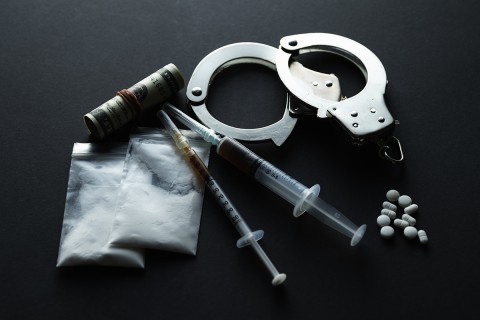Oregon has shown us how to finally end the war on drugs
The promise of the Drug Addiction Treatment and Recovery Act, which voters approved this week

In 1971, President Richard Nixon declared a national “war on drugs.” Almost 50 years and $1 trillion later, we can categorically say that the war has been lost. Drugs are more widely available than ever. Use has not declined. In short, the drug war has failed even on its own terms: it has not curtailed the market.
This misguided war has also caused grave harm. Not only has it put Black citizens behind bars at disproportionate rates, it has also driven the militarization of the nation’s police departments.
In 2015, I started an organization called Clergy for a New Drug Policy. I wanted to mobilize clergy to support treatment rather than prosecution when it comes to drug use. Together, we have helped to legalize medical uses of cannabis in 33 states and adult recreational use in 11 states.
Read our latest issue or browse back issues.
Decriminalizing cannabis is a first step, but it will take much more to end the war on drugs. So you can imagine the surge of joy I felt in November when Oregonians voted in favor of a state ballot measure aimed to decriminalize all drugs and to prioritize recovery for drug addicts—the first such policy in the United States.
The fundamental premise of Oregon’s Drug Addiction Treatment and Recovery Act is that the best response to those suffering from drug use is treatment rather than incarceration. The measure does not legalize drugs; it decriminalizes the possession and use of small amounts of drugs. Selling drugs will continue to be a crime. But under the new law, the 8,900 people arrested in Oregon last year solely for low-level possession would not have been subject to arrest.
The measure calls for addiction recovery centers to be established within each of the state’s 13 coordinated care service areas. Individuals possessing a small amount of any drug (up to one gram of heroin, two grams of cocaine, or less than 40 pills of oxycodone, for example) will not be subjected to criminal punishment. Instead, individuals will receive a $100 fine, to be waived upon the completion of a health assessment with an addiction treatment professional.
Services at the care centers will be free, paid for through insurance reimbursement and revenue from cannabis taxes, which have outpaced estimates following legalization in 2014. Savings from reduced criminal justice spending due to fewer arrests under the new legislation will also be directed to drug addiction services.
The significant and complex question now is, What does this initiative mean for future national drug policy? Does it signal the end of the war on drugs as currently waged? Or will it be dismissed as a wacky piece of legislation that could only have been introduced in a state populated by granola-eating, Birkenstock-wearing liberals out of step with the rest of the country?
I don’t think it will be the latter. We have learned that the mass incarceration fueled by the war on drugs is very expensive. As a result, states have been competing with each other over the past 20 years to reduce prison and jail costs. Twenty states have moved to what is called “defelonization” by classifying low-level drug offenses as misdemeanors rather than felonies.
Additionally, in the past 40 years the concept of harm reduction has become a viable and even compelling alternative to abstinence as a response to drug addiction. This approach seeks to reduce the harm that drug use causes. It does this without the quid pro quo of treatment—there is no accompanying insistence that users stop.
Safe consumption sites are probably the most dramatic harm reduction response. Individuals are permitted to bring their drugs to these facilities and administer them under medical supervision. While no safe consumption sites exist in the United States—at least not above ground—more than 100 such sites exist in ten countries around the world.
It is also likely that the state-by-state drive to legalize cannabis has changed attitudes about drug legalization. Quite simply, the sky has not fallen, as opponents so vociferously predicted. Drug use has not increased in any of the states that have legalized medical cannabis, nor has use by minors increased in the states that have approved adult recreational use.
Writing in these pages eight years ago, theologian Walter Wink told us:
Our attempts to stamp out drugs by force violate a fundamental spiritual principle. Jesus articulated it in the Sermon on the Mount: “Don’t react violently against the one who is evil.” Adapted to fit the drug issue, it means “Do not resist drugs by violent means.” We have merely repeated the mistake of Prohibition.
He was profoundly right. How easy it is not to see that putting people in jail or prison is an act of violence—slow-motion violence, yes, but violence nevertheless.
The war on drugs continues to fuel the division of our nation by race. It breeds violence in our streets. It militarizes our police. It ensures an underlying level of tension between police and communities in minority neighborhoods. We should be grateful to Oregon for providing a model for finally bringing this seemingly endless and tragic war to an end.





